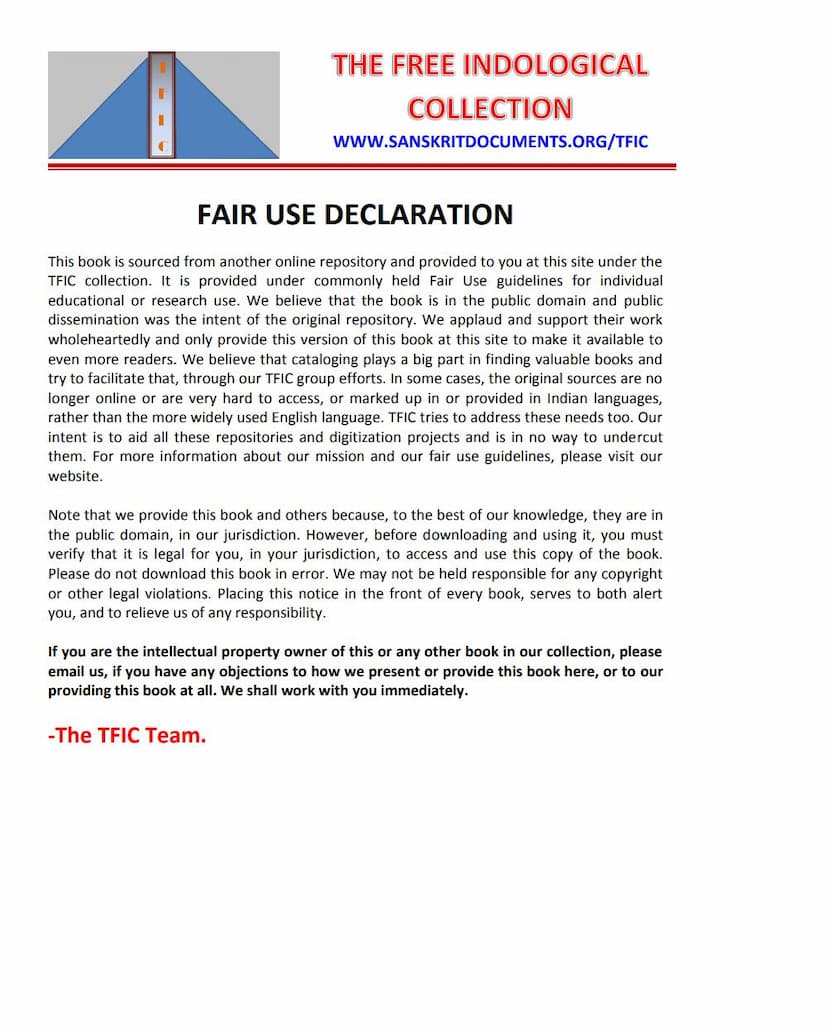Jaina Inscriptions
Added to library: September 2, 2025

Summary
This comprehensive summary is based on the provided text, "Jaina Inscriptions" by Puranchand Nahar, Part I, published in Calcutta in 1918.
Book Title: Jaina Inscriptions Author: Puranchand Nahar Publisher: Puranchand Nahar Publication Year: 1918 Language: Primarily Hindi (with some Sanskrit and Prakrit) Volume: Part I
Core Purpose and Content: "Jaina Inscriptions" is a monumental compilation of inscriptions found on Jaina statues, temples, pillars, and other artifacts across various regions of India. The primary aim of the author, Puranchand Nahar, was to preserve and make accessible the historical and religious information contained within these inscriptions, especially given the relative lack of detailed, chronological historical records for the Jaina tradition. The book serves as a crucial resource for understanding the history, lineage of Acharyas, socio-economic conditions, geographical locations, and the spread of Jainism.
Key Themes and Observations:
-
Historical Significance: The author emphasizes that inscriptions are vital sources for reconstructing India's ancient history, particularly for the Jaina community. Unlike historical accounts which can be altered by time, inscriptions on stone and metal are considered more enduring and direct evidence.
-
Scope of the Collection: This volume (Part I) is a collection of inscriptions primarily from Bengal and other parts of India. The inscriptions are meticulously cataloged by location, temple, and sometimes by the deity or important figure mentioned. The book includes an index of places and a glossary of Jaina castes, gotras, Gachhas, and Acharyas with their associated dates where available.
-
Types of Information Found in Inscriptions: Nahar highlights the common elements found in these inscriptions:
- Chronology: Year, month, date, day of the week.
- Lineage and Family: Names of lineage (Vansh), Gotras, family names.
- Religious Hierarchy: Names of Gachhas, branches (Shakha), and Ganas.
- Spiritual Leaders: Names of Acharyas, their disciples, and succession (Pahavali).
- Geography: Names of countries, cities, and villages.
- Artisans and Donors: Names of sculptors, engravers, patrons, kings, and ministers.
- Contemporary Events: Mentions of significant occurrences or social context.
-
Methodology and Challenges:
- Nahar notes the effort and expense involved in collecting these inscriptions, often found on stone and metal, sometimes on the back of idols or carved into foundational stones.
- He acknowledges the difficulty in deciphering inscriptions, especially those on stone that have weathered over time, leading to incomplete readings.
- Nahar expresses a personal passion for collecting these inscriptions, driven by a desire to understand Jain history and to encourage others to contribute to this field.
- He admits his limitations in Sanskrit and Jain Shastras, expressing hope that scholars will correct any errors.
-
Structure of the Book:
- The book begins with a "Fair Use Declaration" by TFIC (The Free Indological Collection), stating the purpose of making the book available for educational and research use under fair use guidelines.
- It then presents the title page in both Hindi and English, followed by a preface by the author.
- The main body of the book is a structured list of inscriptions, identified by a number (e.g., [1], [2], [3]...). Each entry typically includes:
- The location (village, city, district, province).
- The name of the temple or site.
- The inscription details (material, text, date, donor, Acharya, Gachha, etc.).
- The text is organized geographically, with an extensive table of contents (सूचीपत्र) listing numerous locations across India, including some international locations like Munich and Chicago, indicating the global reach of Jaina artifacts or studies by the time of publication.
- The latter part of the book contains detailed lists of inscriptions from specific locations, providing the actual transcribed text (in Devanagari script) with dates, names, and other relevant information.
- An appendix provides "lists of Jati-Gotra and Acharyas' Gachha" for ease of reference.
-
Notable Inscriptions and Insights:
- The inscriptions cover a vast chronological span, from ancient periods (mentioned as Samvat 1011, 1110, 12xx, 13xx, 14xx, 15xx, 16xx, 17xx, 18xx, 19xx) to the early 20th century.
- They record the establishment and renovation of temples, the installation of Jina images, donations made by various individuals and families (often mentioning their Gotra, Gachha, and Acharya), and sometimes the purpose of the donation (e.g., for the merit of parents).
- The influence of various Jaina monastic orders (Gachhas like Kharatara, Tapa, Anchal, Nagendra, Brahmanya, etc.) and their prominent Acharyas (like Jinavallabha Suri, Jinamudra Suri, Jinachandra Suri, Hemachandra Suri, Vijay Sen Suri, Hiravijaya Suri, etc.) is frequently mentioned, providing a detailed genealogical and chronological map of the Jaina monastic leadership.
- The inscriptions often reveal the social status and economic activities of Jaina communities, naming prominent individuals and families involved in trade and patronage.
- The inclusion of inscriptions from locations like Munich and Chicago suggests the author's awareness of or access to information beyond India's borders, possibly through archaeological reports or personal connections.
-
Author's Appeal: Nahar concludes by encouraging other scholars and religious leaders to contribute to the collection of Jaina inscriptions, hoping for a comprehensive and authoritative compilation in the future.
In summary, "Jaina Inscriptions" by Puranchand Nahar is an encyclopedic work that meticulously collects and presents epigraphical data related to Jainism. It is an indispensable primary source for scholars of Jain history, art, religion, and social history, offering direct insights from the past through the inscriptions themselves.